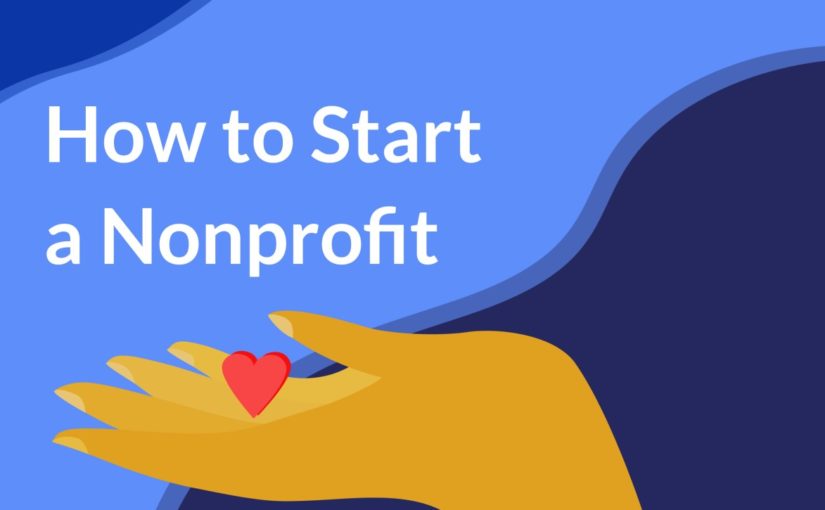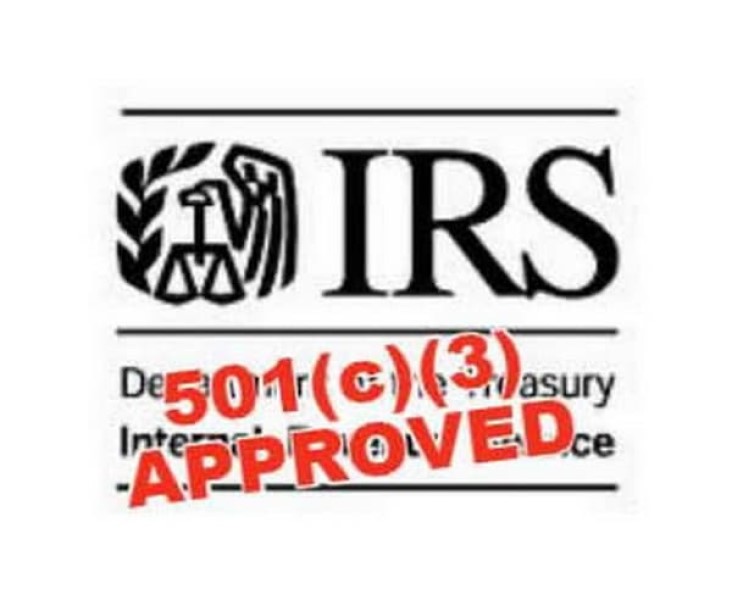Complete The Form Below To Obtain 501(c)(3) Tax-Exempt Status
To incorporate a California nonprofit (public benefit corporation), you must complete and file nonprofit articles of incorporation with the California Secretary of State.
Corporate Name
Your nonprofit’s name should be distinguishable from the names of other organizations on record with the California Secretary of State, and the name can’t suggest a purpose different from that described in your nonprofit Articles of Incorporation. You can mail a Name Availability Inquiry Letter to the Secretary of State’s office to find out if your nonprofit’s name is available, and you can reserve a name (for a $10 fee) for up to 60 days.
Business Address
You’ll then need to list a physical address for your nonprofit corporation.
Service of Process
This section asks for the name and California street address of your nonprofit’s registered agent. This is the address where the state will deliver services of process (lawsuits and legal notifications) on behalf of your nonprofit. You can list yourself, a willing associate, or a registered agent service
Purpose Statement
The three distinct nonprofit Articles provided by the State of California (for public benefit, mutual benefit, and religious corporations) provide slightly different statements of purpose and different instructions. If your nonprofit is a mutual benefit or religious corporation, don’t alter the statement of purpose, as it appears on the form, in any way. If your nonprofit is a public benefit corporation, you’ll check a box identifying your general purpose as “public” and “charitable” and then write in a more specific statement of purpose.
Additional Statements
This is another section where the Articles differ for mutual benefit, public benefit, and religious nonprofits in California. For mutual benefit corporations, you’re asked to provide a more specific statement of purpose (just a sentence), and the state provides the rest. If your nonprofit is a religious corporation or public benefit corporation, the state’s forms provides language recommended by the IRS for obtaining 501(c)(3) federal tax-exempt status.
Signature of Incorporator(s)
California asks for your Articles to be signed “by each incorporator,” but your incorporator does not need to be an officer, director, or member of your nonprofit.
Appoint the board of directors.
If the initial directors are not named in the articles of incorporation, the incorporator can and should appoint the board through a written action.
Under California law, a nonprofit board may be composed of as few as one director, but the IRS is unlikely to grant 501(c)(3) status to a nonprofit with only one director and most nonprofits have anywhere between three and 25 directors. Expedited LLC.
These directors should understand their duties and responsibilities to act with reasonable care and in the best interests of the organization while providing direction and oversight over the organization’s activities, finances, officers, and legal compliance. BoardSource offers valuable resources on nonprofit corporate governance, including these Ten Basic Responsibilities of Nonprofit Boards. We recommend also looking at the Board Source website for more information and resources about boards, many of which are free.
Draft the bylaws and conflict of interest policy.
A corporation’s bylaws typically address, at a minimum, fundamental provisions related to the management of the activities and affairs of the corporation. Bylaws should provide guidance to the board and reassurance of sound governance practices to government authorities, funders, and other interested stakeholders.
Bylaws typically contain specific provisions detailing:
(a) The purpose or mission of the nonprofit;
(b) How directors are elected or otherwise selected (e.g., by majority vote of directors at the annual board meeting);
(c) How the board may take an action (e.g., by majority vote of directors);
(d) How board meetings are called and noticed (e.g., six times per year with 14 days advance notice by email);
(e) How board meetings are conducted (e.g., the chair of the board presides);
(f) The officers of the corporation (a president or chair of the board, secretary, and treasurer or chief financial officer are required by California law);
(g) The duties and responsibilities of each officer;
(h) The authorization of board and non-board committees (e.g., committees tasked to act with the authority of the board versus committees that can only make recommendations);
(i) The level of indemnification provided by the corporation to protect its directors, officers and other agents; and
(j) The reports due to directors (e.g., financial reports).
If the nonprofit has voting members, the bylaws will also need to contain additional provisions regarding member rights and processes. Nonprofits considering a voting membership structure may want to first discuss such structure with a lawyer, particularly if they do not expect their members to actively participate in meetings and regularly exercise their voting rights. Public Counsel provides an Annotated Form of Bylaws for a California Nonprofit Public Benefit Corporation.
Separately articulated policies commonly supplement the bylaws in addressing key governance and management issues. For example, although not required by federal tax law, it is considered to be a best practice for any nonprofit to have an adopted conflict of interest policy. Additionally, a nonprofit must describe its policy regarding conflicts of interest in the IRS Form 1023. Accordingly, it would be advantageous for most nonprofits to adopt a policy similar to the sample policy provided in Appendix A (page 25) of the Instructions to Form 1023.
Take the initial board actions at a board meeting or by unanimous written consent of the directors.
The board should take the following actions:
(a) Adopt the bylaws and conflict of interest policy;
(b) Elect officers;
(c) Adopt a fiscal year (such as a year ending December 31 or June 30);
(d) Approve establishing a bank account;
(e) Approve applying for federal and state tax-exempt status;
(f) Approve reimbursement of startup expenses (if applicable); and
(g) Approve the compensation of the executive director (CEO) or the treasurer (CFO) (if applicable).
Obtain an employer identification number (EIN).
An officer or authorized third party designee may apply for and obtain an EIN online.
File the initial registration form (Form CT-1) with the California Attorney General’s Registry of Charitable Trusts.
This annual registration is required for the majority of nonprofit public benefit corporations and must be filed within 30 days after receipt of assets. The CT-1 Form and Instructions are available online. The corporation’s articles of incorporation and bylaws should be included in the initial filing. The Form 1023 application and federal determination letter (Step 9) should be submitted upon receipt of the determination letter to complete the filing.
File the Statement of Information (Form SI-100) with the Secretary of State.
The Statement must initially be filed within 90 days of the date of incorporation. This biennial filing requirement, which identifies the organization’s address, principal officers, and agent for service of process, can be filed online or by mail. (You can find information and instructions on completing the Statement of Information here.)
Apply for federal tax exemption with the Internal Revenue Service (IRS) and receive a determination letter from the IRS.
Completing the Form 1023 application for exempt status under Internal Revenue Code (IRC) Section 501(c)(3) may be the most challenging part of the startup process. It is a legally-driven and comprehensive inquiry covering 11 Parts and 8 Schedules. Luckily, in 2013 the IRS added new tools and instructional videos to their website to help you understand and file it correctly.
A critical section for careful completion is Part IV, Narrative Description of Your Activities, which asks: for each past, present, or planned activity, include information that answers the following questions.
- What is the activity?
- Who conducts the activity?
- When is the activity conducted?
- Where is the activity conducted?
- How does the activity further your exempt purposes?
- What percentage of your total time is allocated to the activity?
- How is the activity funded?
- List any alternate names under which you operate, including any “aka” (also known as) or “dba” (doing business as) names.
Form 1023 also requires information regarding (a) organizational structure; (b) compensation and other financial arrangements with officers and directors, and certain highly paid employees and independent contractors; (c) members and other individuals and organizations that receive benefits from the organization; (d) organizational history (e.g., an organization that was spun off or previously fiscally sponsored by another organization may need to complete an additional schedule as a successor organization); (e) specific activities; and (f) actual and/or projected statement of revenues and expenses (which should be consistent with any identified activities).
Part X is designed to determine the organization’s classification as either a private foundation or a public charity. Public charity status is generally the more favorable tax status, but requires an organization to meet certain requirements. For most organizations, this means passing a public support test over a five-year measuring period. For organizations that will receive a large bulk of their support from few sources over their first five years, monitoring and managing of the public support ratio may be critically important. Public Charity Status Simplified (a little) is a helpful online resource from Insight Center for Community Economic Development.
The filing fee for Form 1023 is currently $850 for all but the smallest organizations.
The IRS may typically take 3-4 months or longer to process a Form 1023 application for exempt status. However, the waiting period may be much longer if the application contains errors, omissions, or other information that require additional development by a special IRS department. The IRS application process is further explained on its Where Is My Exemption Application page.
Apply for California tax exemption with the California Franchise Tax Board (FTB) and receive an affirmation of exemption letter from the FTB.
Organizations with a 501(c)(3) federal determination letter can request California affirmation of tax exemption under California Revenue & Taxation Code section 23701d from the FTB by filing Form 3500A along with a copy of the IRS determination letter. The FTB will recognize the organization’s exemption from state income taxes as of the federal effective date. An organization that does not have a 501(c)(3) federal determination letter is otherwise required to file the more complicated Form 3500 for state income tax exemption (there is an instruction booklet available for this form). There is no fee for Form 3500A and a $25 fee for Form 3500
How Much Does It Cost to Incorporate a California Nonprofit?
The base state filing fee for California nonprofit Articles of Incorporation is $30 for mailed filings, plus $5 if you need a certified copy. If you’re willing to hand deliver your nonprofit’s Articles to the Secretary of State’s Sacramento office, you will pay an additional $15 special handling fee (also called the counter drop-off fee) and the state will prioritize your filing over other filings received by mail. Additionally, California requires nonprofits to submit an Initial Statement of Information within 90 days of incorporating with the state, which comes with a $20 fee of its own.
Want a faster response?
California offers several expedited options, including 24-hour processing for an additional $350 expedite fee and same-day processing for an additional $750 expedite fee. Luckily, you don’t have to pay the $15 counter drop-off fee if your nonprofit opts for one of the more expensive expedited filing options.

